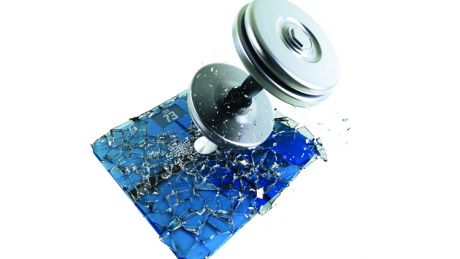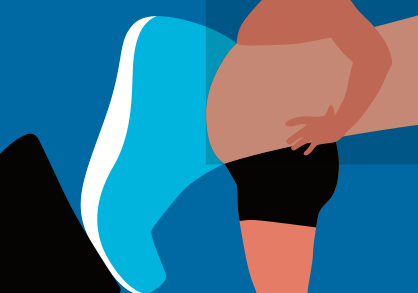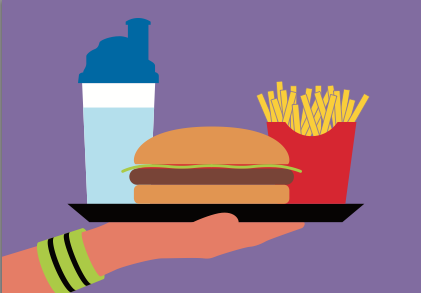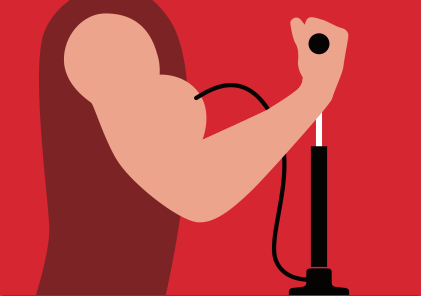The most common fitness mistakes
Looking to get in shape for the first time? Don't start with the wrong ideas. MF dissects the most common fitness mistakes

‘Your weight is what you should worry about’

When it comes to your body, the bathroom scales aren’t as important as the mirror
The myth
It’s natural to look for proof of progress when you start a new fitness regime, but leaping on the scales every morning is the wrong way to approach it. For starters, the body mass index (BMI) system – used by the NHS – becomes a poor indicator of health once you start putting on muscle. It makes no distinction between fat and muscle, so a 170cm-tall man who weighs 77kg will be diagnosed as overweight whether he has 8% or 18% body fat. A better indication is the mirror – it doesn’t lie.
Expert view - Mike Smalley, personal trainer
‘Building as much lean tissue as possible should always be the aim, because it also creates the perfect environment for your body to lose weight effectively and keep it off. To do so, reduce your carbs and cardio, increase your intake of protein and healthy fats – especially at breakfast – and eat plenty of green veg. Finally, lift weights. A well-structured weights programme, including plenty of big lower-body work, will help to build muscle and create the leaner look you’re after.’
‘Running is best for fat loss’

Want to shed kilos? Think short, sharp shocks, not the long and winding road
The myth
Sign up for workout ideas, training advice, reviews of the latest gear and more.
It’s easy to think of a gentle run as a fat-burner – it makes you sweaty and it feels like a workout. Unfortunately it’s far from the most efficient way to lose fat. You may have heard the myth of the fat-burning zone, but don’t be tricked: although it’s technically true that your body uses a higher percentage of fat as fuel during low-intensity exercise, the minuscule amount of total calories burned makes it almost pointless. Running is fine if you want to get fit, but not for fat loss.
Expert view - Sally Moss, personal trainer
‘The best way to lose fat is to lift weights and eat right. Lifting weights builds lean mass, raises metabolic rate and stimulates anabolic hormones such as testosterone and growth hormone, which promote fat loss. Even when you’re not training, you burn more calories thanks to the metabolic demands of increased muscle. Running burns some calories but it lacks the anabolic effect of weight training, so it isn’t as efficient for fat loss. You can’t out-run a bad diet either. Eat meals high in protein and fats but low in sugar to avoid storing excess calories as fat.’
‘If you train enough, diet doesn’t matter’

No amount of training will offset a bad diet – and abs start in the kitchen
The myth
‘Of course I can have another beer,’ you say to yourself. ‘I’ll just work it off tomorrow.’ Consider this, though: every delicious pint costs you about 20 minutes’ moderate-intensity rowing, if you’re taking this seriously. Then consider that the beer reduces your chance of completing the workout, since it’s hardly the perfect fuel. Finally, remember that eating properly will make results come faster and help you to stick to your plan.
Expert view - Ben Wilson, trainer and nutritionist
‘Diet is your primary tool for hitting ideal body-fat levels – you simply cannot out-train a bad diet. Just look at the average competitor in the London Marathon, not the elite guys. Many are overweight despite pounding out the miles for months. Every magazine cover model has nutrition at the heart of their six-pack plan. And when it comes to muscle gain, you can undo all your work in the gym by not giving your body the foods it needs to maximise muscle growth. Focus on protein, quality fats and greens.’
‘Curls are the best biceps builder’

Still doing endless reps with the dumbbell? Your arms aren’t going to grow
The myth
If you’re trying to fill out your T-shirt sleeves, it’s tempting to grab a pair of dumbbells and just start curling. It hurts your biceps, so it must be working – and besides, it’s what everyone else does, right? Wrong. In studies measuring electrical activity in muscles, biceps curls cause less activation than rope climbs or even chin-ups, and don’t produce the same jolt of growth hormone.
Expert view - Sean McPhillips, personal trainer
‘Work on bent-over rows and chin-ups. These compound moves will work a larger muscle – the lats, in the case of chin-ups – as well as your biceps, giving you a boost of testosterone and growth hormone and resulting in greater gains all over. Also, if you want big arms, don’t just focus on your biceps because they’re what you can see in the mirror – your triceps make up two-thirds of your upper arm. For big triceps, use bodyweight dips. Once you can manage three sets of ten, start adding weight by wearing a weighted vest, backpack or belt.’
‘Exercise is best done every day’

Don’t limit your activity to strictly monitored training times
The myth
Confining exercise to the three hours a week you fling on a pair of shorts and head to the gym is a relatively recent phenomenon. Activity levels have been steadily decreasing in the general population for years but many experts believe a training approach that mimics the varied fitness demands of a more caveman-like or ‘Paleo’ lifestyle is best. It’s fine if you enjoy your gym sessions, but if you can’t get to them, don’t let that limit you.
Expert view - Darryl Edwards - The Fitness Explorer
‘Humans were designed to move by integrating movement into normal life. When you perform a movement repeatedly your muscles become more efficient, which improves your ability to perform that activity. So be opportunistic about movement – wake up in the morning and do press-ups, or hang a pull-up bar at home and do a few chins every time you pass it. The key here is not to train to failure but to focus on quality of movement. This will still get you fitter and stronger and will add a significant number of reps without unnecessary fatigue or a drain on your limited time.’
‘Sit-ups build a six-pack’

In pursuit of hard abs? Make sure you’re doing the right moves and eating the right things
The myth
Are you doing hundreds of sit-ups and crunches daily in the pursuit of a six-pack? You’re wasting your time – and, according to spine structure expert Dr Stuart McGill, increasing your chances of lower back problems in later life. The best place to work on your six-pack is the kitchen, by watching your food intake. And if you’re relatively new to training, big moves such as the squat and deadlift will strengthen your core on their own. If you want to take it up a notch and train your abs directly, there are far more effective moves than sit-ups.
Expert view - Dan Parker, personal trainer
‘If you want a six-pack you need to train using the principles of hypertrophy, or going heavy for eight to 12 repetitions with around 60-90sec rest. It’s highly unlikely that sit-ups will overload your abs enough to let you reach failure you within that rep range. Instead, I’d suggest doing tougher moves such as hanging leg raises, weighted if they’re too easy, cable Russian twists and dumbbell pull-overs, going for two to three sets of each twice a week.’
‘You need weights to train’

Getting in shape doesn’t have to mean hitting the dumbbell rack
The myth
Want proof that you don’t need to touch a barbell to get in awe-inspiring shape? Look at Olympic gymnasts. Some never touch a weight but they’re all in impressive physical condition – and brutally strong. The key with bodyweight moves is to keep making them tougher and even that doesn’t take much kit.
Expert view - Rob Silver, CrossFit trainer
‘It’s a common misconception that the only way to get fit is in a gym full of machines. In reality, one can get fit anywhere – from Hyde Park to the local car park. The best way to achieve optimum results is short and intense workouts using your body plus simple tools such as a jump rope. Sprint, jump over things, skip and do burpees and lunges and pull-ups on tree branches. Make sure you always challenge yourself by increasing the difficulty each week – say, by aiming for more reps, shorter rest periods or tougher exercise variations.’
Coach is a health and fitness title. This byline is used for posting sponsored content, book extracts and the like. It is also used as a placeholder for articles published a long time ago when the original author is unclear. You can find out more about this publication and find the contact details of the editorial team on the About Us page.

